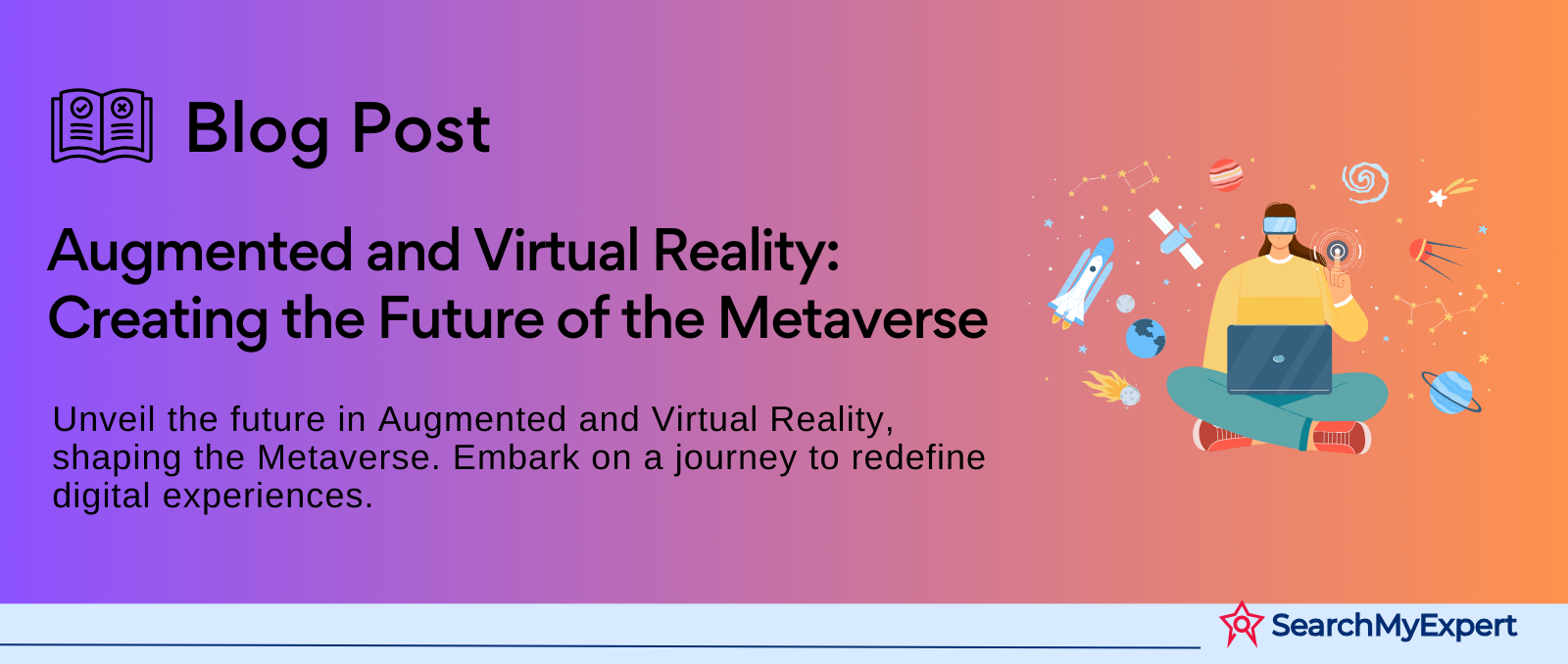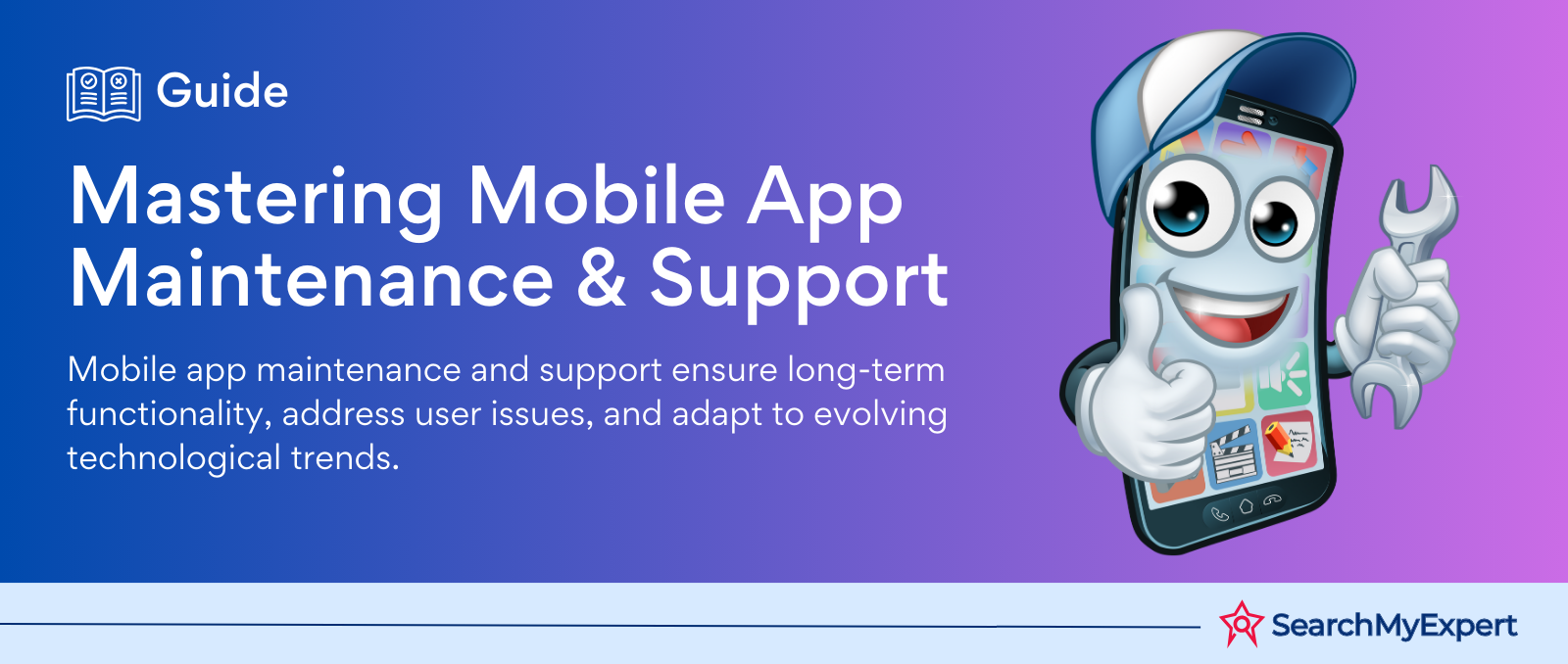Augmented and Virtual Reality: Creating the Future of the Metaverse

The Dawn of the Metaverse: Defining a New Digital Realm
In the ever-evolving landscape of digital technology, the metaverse stands as a groundbreaking concept, redefining how we interact with the digital world. At its core, the metaverse is a persistent, 3D virtual world, offering a tapestry of interconnected experiences that blend reality and digital fantasy. This immersive universe is not just a single platform but an extensive network of digital spaces, where users can work, play, socialize, and participate in a myriad of activities that transcend the limitations of the physical world.
Virtual Reality (VR): The Gateway to Immersive Experiences
A key player in this digital revolution is Virtual Reality (VR). VR technology acts as the gateway to these immersive experiences, enveloping users in a digital environment that is both engaging and interactive. VR's potential in the metaverse is vast:
- Virtual Exploration: VR enables users to traverse through diverse virtual landscapes, from recreations of real-world locations to fantastical realms born from pure imagination.
- Enhanced Gaming: The gaming industry is revolutionized through VR, offering a level of immersion that traditional gaming platforms can't match.
- Interactive Social Spaces: VR allows for the creation of virtual social spaces where users can interact in a more lifelike and engaging manner.
Augmented Reality (AR): Blending the Digital and Physical Worlds
While VR immerses users completely in a digital environment, Augmented Reality (AR) brings a different flavor to the metaverse experience. AR overlays digital information onto the physical world, allowing for a seamless blend of both realities. The applications of AR in the metaverse include:
- Educational Tools: AR can transform educational content, making it more interactive and engaging by overlaying digital information in real-time learning environments.
- Retail and Marketing: In the metaverse, AR can revolutionize shopping experiences by allowing customers to visualize products in their real-world environment before purchasing.
- Enhanced Navigation and Information: AR can provide real-time information overlays in physical spaces, enhancing navigation and providing contextual information about the user’s surroundings.
VR's Role in Shaping Immersive Experiences in the Metaverse
Virtual Reality (VR) is the cornerstone of the metaverse, offering a portal into worlds where the only limit is imagination. VR technology is adept at creating fully immersive environments, effectively removing the barriers imposed by physical limitations. Through a VR headset, users can step into a realm where digital landscapes feel as real as the physical world.
Gaming and Entertainment: A New Era of Digital Interaction
In the gaming and entertainment sector, VR's contribution is transformative:
- Virtual Worlds: VR allows players to step into expansive, interactive worlds. These environments are not just visually impressive but also responsive to the user's actions, creating a sense of presence that traditional gaming cannot match.
- Interactive Storytelling: Story-driven experiences in VR are profoundly immersive. Users become part of the narrative, influencing and experiencing stories in a way that is both personal and dynamic.
- Social VR Experiences: VR enables users to interact in social settings within the metaverse. These platforms support activities ranging from virtual concerts to meeting spaces, where users can socialize and connect with others globally.
Education and Training: Bridging Knowledge with Experience
VR's impact on education and training is equally significant:
- Real-world Simulations: VR offers an unparalleled medium for training and education, allowing users to practice skills in a safe, controlled environment that mimics real-world scenarios.
- Interactive Learning Environments: Traditional learning materials are transformed into interactive, 3D experiences. This hands-on approach caters to various learning styles and increases retention and understanding.
- Remote Collaboration: VR provides a platform for remote education and training, allowing participants from different locations to learn and work together in a shared virtual space.
Professional Applications: Revolutionizing Workspaces and Design
In professional spheres, VR has several applications:
- Virtual Workplaces: Remote work is redefined through VR, enabling employees to interact in a virtual office space that simulates the experience of being in an actual workplace.
- Design Visualization: Architects, designers, and engineers can use VR to visualize and iterate on their creations in 3D space, enhancing accuracy and creativity.
- Product Prototyping: VR allows for rapid prototyping of products, enabling designers to create, test, and modify designs in a virtual environment before any physical model is made.
Challenges and Limitations of VR in the Metaverse
Despite its potential, VR technology faces several challenges in the metaverse:
- Hardware Limitations: The need for powerful hardware and high-quality VR headsets can be a barrier to widespread adoption.
- Physical Space Requirements: VR often requires physical space for movement, which can be a limitation for users in smaller environments.
- Health and Safety Concerns: Prolonged use of VR can lead to health issues like motion sickness, eye strain, and physical discomfort.
- Accessibility and Inclusivity: Ensuring VR is accessible and inclusive to all users, regardless of physical abilities or socioeconomic status, remains a challenge.
Augmented Reality: A Seamless Blend of Digital and Physical Worlds
Augmented Reality (AR) stands as a compelling counterpart to VR in the metaverse, offering a unique way to interact with both digital and physical realms. Unlike VR, which creates a fully immersive virtual environment, AR enriches the real world by overlaying digital elements onto it. This technology adds layers of information, visual effects, and interactive features to the user's view of their physical surroundings, using devices like smartphones, tablets, or specialized AR glasses.
Enhancing Shopping Experiences in the Metaverse
AR significantly transforms retail experiences within the metaverse:
- Try-On Clothes Virtually: AR technology allows shoppers to visualize clothes on themselves without physically trying them on, offering a convenient and efficient shopping experience.
- Furniture Visualization in Real-Time: Consumers can see how furniture and decor items would look in their own homes before making a purchase, significantly enhancing the decision-making process.
Educational Overlays: Learning with Context
In the field of education, AR provides immersive learning opportunities:
- Interactive Learning with Real-World Context: AR can overlay educational content onto physical objects and locations, offering a more interactive and engaging learning experience.
- Historical Reenactments: AR can bring history to life by recreating historical events and environments in the user’s current location, providing an immersive way to experience and understand the past.
Gamification of the Real World
AR takes gaming to a new level by integrating it into the physical world:
- AR Treasure Hunts: Users can participate in treasure hunts in the real world, searching for virtual items or clues that are visible only through AR technology.
- Interactive City Walks: AR can turn a simple walk through the city into an interactive experience, with informational overlays and interactive elements based on the user's location.
- Location-Based Games: These games use the user's real-world location as a backdrop for gameplay, allowing them to interact with virtual elements superimposed onto their environment.
Challenges and Limitations of AR in the Metaverse
Despite its potential, AR technology faces specific challenges within the metaverse:
- Device Dependency: AR often relies on external devices like smartphones or AR glasses, which can be a barrier to a seamless experience.
- Battery and Power Constraints: Continuous use of AR can be demanding on device batteries, limiting the duration of uninterrupted experiences.
- Accuracy and Precision Issues: Overlaying digital information accurately onto the real world requires high precision, which can be challenging in dynamic environments.
- Privacy Concerns: The use of cameras and location data in AR applications raises privacy issues that need to be addressed.
Convergence and Synergy: The Collaborative Power of VR and AR in the Metaverse
The metaverse, a burgeoning digital frontier, is primed to achieve new heights of immersion and interaction through the convergence of Virtual Reality (VR) and Augmented Reality (AR). When these two technologies intertwine, they create a spectrum of experiences that range from fully immersive virtual worlds to enhanced real-world environments, offering a multitude of innovative applications.
Blended Reality Experiences: Merging Worlds Together
One of the most exciting prospects of VR and AR synergy is the creation of blended reality experiences:
- Enhanced Real-World Exploration: By combining VR’s immersive environments with AR’s real-world overlays, users can explore enhanced versions of their physical surroundings, enriched with interactive, virtual elements.
- Interactive Entertainment: Imagine a game or a narrative experience where the storyline unfolds both in a virtual world (VR) and overlays onto the user's physical environment (AR), creating a truly hybrid form of storytelling.
Hybrid Learning Environments: The Future of Education
The educational sector stands to benefit significantly from the fusion of VR and AR:
- Immersive Learning Modules: Combining VR’s ability to create fully immersive educational environments with AR’s context-based overlays can provide students with a deeper understanding of subjects by experiencing them in a variety of contexts.
- Virtual Field Trips with Real-World Context: Students can take virtual field trips to historical sites, museums, or even distant planets, and then use AR to overlay relevant information or historical facts directly onto their view of these locations.
Mixed-Reality Collaboration Tools: Redefining Teamwork
In the professional sphere, mixed-reality tools that combine elements of both VR and AR are set to revolutionize collaboration:
- Virtual Meetings with Real-World Integration: Teams can meet in a virtual space while still interacting with real-world objects or documents, enhancing collaboration and productivity.
- Design and Prototyping: Designers and engineers can work in a VR space to create and modify designs, and then use AR to project and review these designs in a real-world context.
The Future Convergence of VR and AR in the Metaverse
Looking towards the future, the convergence of VR and AR technologies in the metaverse presents vast potential:
- Seamless Transitions Between Virtual and Augmented Realities: As technology advances, we can anticipate a more fluid transition between VR and AR experiences, allowing users to switch between fully immersive and augmented environments effortlessly.
- Enhanced User Interface and Control: The convergence could lead to the development of new user interfaces that blend physical and virtual controls, providing more intuitive and natural ways to interact with digital content.
- Personalized and Contextual Experiences: The combined power of VR and AR could lead to highly personalized experiences, where the digital content adapts to the user’s preferences, location, and context in real-time.
Beyond Entertainment: The Transformative Societal Impact of VR and AR in the Metaverse
As we delve deeper into the metaverse, the influence of Virtual Reality (VR) and Augmented Reality (AR) extends far beyond the realm of entertainment, ushering in significant changes in various aspects of society.
Work and Careers: Shaping the Future of Professional Life
The integration of VR and AR in workspaces heralds a new era for careers and professional environments:
- Remote Work and Virtual Collaboration: VR and AR technologies enable immersive remote working environments, where geographical barriers are eliminated, fostering global collaboration and networking.
- Creation of New Professions: As the metaverse expands, novel career paths emerge, including VR/AR content creation, virtual event planning, and metaverse infrastructure development.
- Enhanced Training and Skill Development: VR and AR offer realistic training simulations in fields like medicine, aviation, and engineering, providing hands-on experience without the risks associated with real-world training.
Education and Learning: Revolutionizing Knowledge Acquisition
The educational landscape is poised for a revolution with the incorporation of VR and AR:
- Personalized Learning Experiences: VR and AR can tailor educational content to individual learning styles, enhancing engagement and comprehension.
- Immersive Educational Environments: These technologies enable students to experience historical events, explore distant galaxies, or visualize complex scientific concepts in 3D, making learning more interactive and memorable.
- Democratization of Access: VR and AR have the potential to bridge educational gaps by providing high-quality learning resources to remote or underprivileged areas.
Social Interactions and Relationships: Redefining Human Connection
In the realm of social interactions, VR and AR introduce new dynamics:
- Virtual Communities and Socialization: These technologies enable the formation of virtual communities, offering new avenues for social interaction and cultural exchange.
- Innovative Communication Forms: AR and VR facilitate unique forms of communication, including immersive virtual meetings and augmented reality messages, enhancing the richness of digital interactions.
- Ethical Considerations: The creation of virtual personas and interactions in the metaverse raises ethical questions about identity, authenticity, and digital etiquette.
Addressing Challenges and Concerns
Despite their potential, VR and AR technologies in the metaverse also present significant challenges:
- Privacy Concerns: The collection of personal data in VR and AR environments, including biometric and behavioral data, raises privacy issues that must be addressed with robust data protection measures.
- Accessibility Issues: Ensuring that these technologies are accessible to all, regardless of socioeconomic status or disabilities, is crucial for equitable participation in the metaverse.
- Ethical Implications: The blurring of lines between reality and virtuality necessitates ethical guidelines to govern behavior, content moderation, and the psychological impacts of prolonged exposure to virtual environments.
The Road Ahead: Navigating Future Trends and Innovations in VR and AR
As we gaze into the horizon of the metaverse, the evolving landscape of Virtual Reality (VR) and Augmented Reality (AR) technologies promises to unlock unprecedented possibilities. These advancements are poised to redefine our digital interactions and experiences.
Technological Advancements Shaping the Metaverse
The future of VR and AR is bright with emerging technologies:
- Haptic Feedback for Realistic Touch Sensations: Advanced haptic technologies are being developed to provide tactile feedback in VR and AR environments. This innovation will enable users to 'feel' virtual objects, adding a new dimension of realism to the digital experience.
- Brain-Computer Interfaces (BCIs) for Deeper Immersion and Control: BCIs could revolutionize user interaction within the metaverse, allowing for control of digital environments through thought. This technology promises a level of immersion far beyond current capabilities.
- Artificial Intelligence for Dynamic and Personalized Experiences: AI is set to play a crucial role in the metaverse, enabling the creation of responsive, adaptive, and personalized virtual environments. AI-driven avatars and NPCs (Non-Player Characters) could provide more realistic and engaging interactions.
Potential New Applications and Possibilities
As these technologies evolve, they open the door to new applications:
- Revolutionizing Healthcare: With advanced VR/AR and haptic feedback, medical professionals could perform virtual surgeries, offering risk-free training and potentially remote surgical procedures.
- Enhanced Educational Tools: Brain-computer interfaces could lead to more intuitive learning experiences, where educational content adapts to the learner's responses and engagement levels.
- Personalized Virtual Experiences: AI could tailor virtual environments to individual preferences and needs, creating highly personalized experiences for entertainment, shopping, and social interactions.
Ethical Considerations and Responsible Development
As we advance into this new digital era, ethical considerations and responsible development become increasingly important:
- Privacy and Data Security: As VR and AR technologies become more integrated into daily life, protecting user data and privacy is paramount. Ensuring secure and ethical handling of sensitive information is crucial.
- Accessibility and Inclusivity: Future developments must focus on making VR and AR technologies accessible to all, removing barriers related to disability, socioeconomic status, or geography.
- Psychological Impact: Understanding and mitigating the psychological impacts of prolonged exposure to VR and AR environments is essential to ensure these technologies contribute positively to user well-being.
Embracing the Future of the Metaverse with VR and AR
As we stand at the brink of a new digital epoch, the roles of Virtual Reality (VR) and Augmented Reality (AR) in sculpting the metaverse are undeniably pivotal. These technologies are not merely tools for creating immersive experiences; they are the architects of a new reality, a metaverse where the boundaries between the physical and the digital are increasingly blurred.
Recapping the Journey into the Metaverse
- VR and AR: Pillars of the Metaverse: VR and AR have emerged as fundamental technologies in constructing the metaverse, offering immersive and augmented experiences that redefine human interaction, work, education, and entertainment.
- Transforming Society: Beyond entertainment, VR and AR hold the potential to revolutionize workspaces, educational paradigms, and social interactions, presenting new opportunities and challenges in equal measure.
- The Road Ahead: The future of VR and AR in the metaverse is ripe with possibilities, from haptic feedback and brain-computer interfaces to AI-driven personalized environments. However, this journey is not without its obstacles.
The Immense Potential and Challenges Ahead
The path forward is laden with immense potential. We foresee a world where digital and physical realities coalesce seamlessly, creating experiences beyond our current imagination. Yet, this rapid evolution brings forth significant challenges. Issues of privacy, accessibility, ethical use, and the psychological impact of prolonged virtual interactions are paramount concerns that need addressing as we forge ahead.
A Call to Action for a Responsible Metaverse
As we venture into this uncharted digital territory, it is a collective responsibility to ensure that the development of the metaverse is guided by ethical principles and a commitment to the greater good. Stakeholders, developers, users, and policymakers must collaborate to:
- Prioritize Privacy and Security: Safeguarding user data and ensuring robust privacy measures in VR and AR applications is non-negotiable.
- Ensure Accessibility and Inclusivity: The metaverse should be a space where everyone can participate, free from the constraints of physical, economic, or social barriers.
- Foster Ethical Development: From content creation to user interaction, every aspect of the metaverse should be grounded in ethical practices that promote positive experiences and well-being.
Conclusion:
As we embark on the exciting journey into the metaverse, the roles of VR and AR stand as fundamental pillars shaping this new frontier. From transforming how we work and learn to redefining social interactions, these technologies open up a world of possibilities. However, this journey is accompanied by significant challenges that must be navigated responsibly. Addressing privacy, accessibility, and ethical issues is crucial to ensure the metaverse evolves into a positive and enriching space for all. As we continue to explore and develop these technologies, it is our collective responsibility to foster a metaverse that is not only technologically advanced but also socially responsible and inclusive.
Elevate your virtual presence with
Metaverse Development Service Companies.
share this page if you liked it 😊
Other Related Blogs

Mastering Docker for App Development: A Comprehensive Guide to Benefits, Use-Cases, and Alternatives
STAY UP TO DATE
GET PATH'S LATEST
Receive bi-weekly updates from the SME, and get a heads up on upcoming events.
Contact Us











